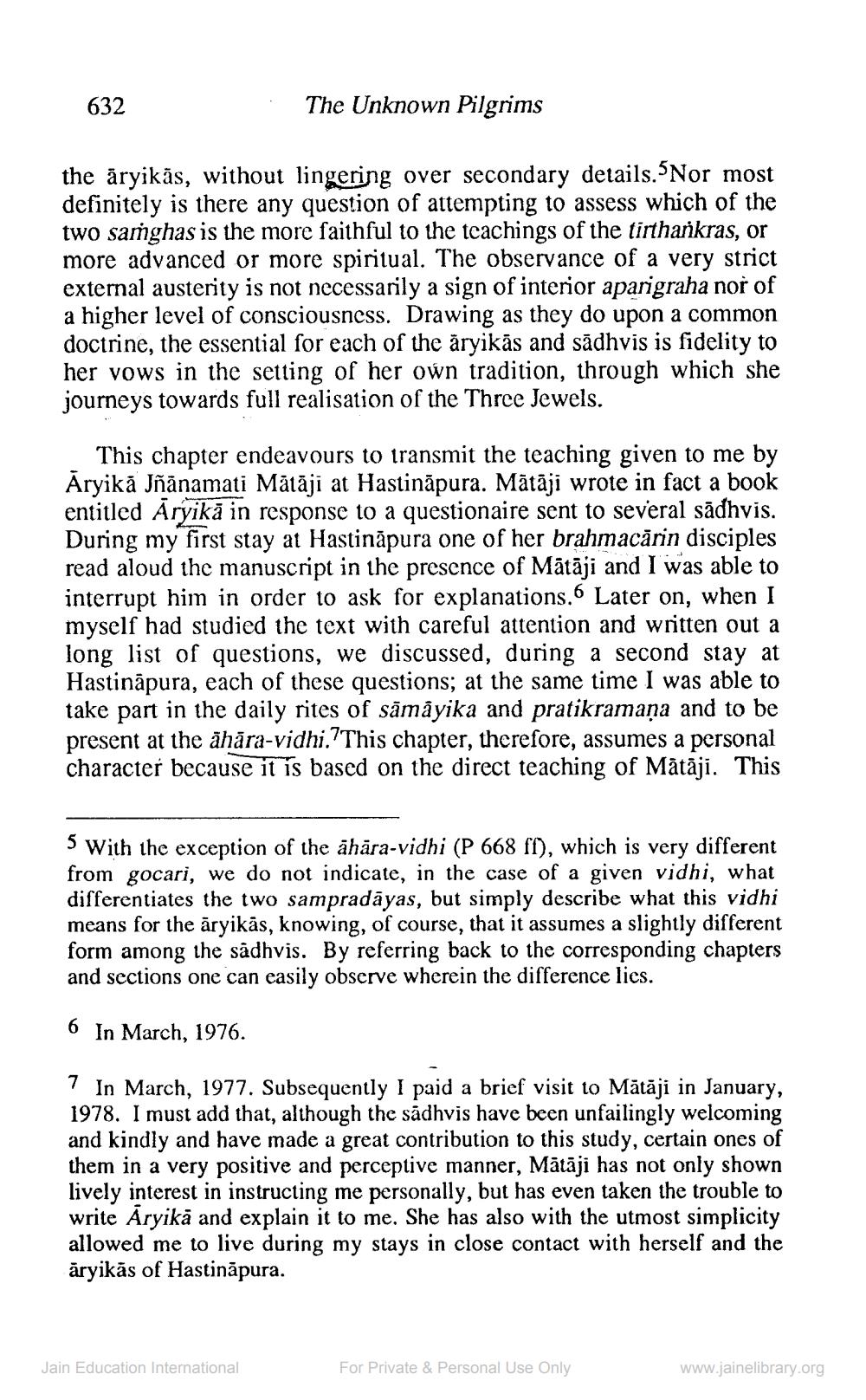________________
632
The Unknown Pilgrims
the āryikās, without lingering over secondary details. Nor most definitely is there any question of attempting to assess which of the two saṁghas is the more faithful to the tcachings of the tirthańkras, or more advanced or more spiritual. The observance of a very strict external austerity is not necessarily a sign of interior aparigraha nor of a higher level of consciousness. Drawing as they do upon a common doctrine, the essential for each of the āryikās and sādhvis is fidelity to her vows in the setting of her own tradition, through which she journeys towards full realisation of the Three Jewels.
This chapter endeavours to transmit the teaching given to me by Aryika Jñānamati Mātāji at Hastināpura. Mātāji wrote in fact a book entitled Aryikā in response to a questionaire sent to several sādhvis. During my first stay at Hastināpura one of her brahmacārin disciples read aloud the manuscript in the presence of Mātāji and I was able to interrupt him in order to ask for explanations. Later on, when I myself had studied the text with careful attention and written out a long list of questions, we discussed, during a second stay at Hastinapura, each of these questions; at the same time I was able to take part in the daily rites of sāmāyika and pratikramana and to be present at the āhāra-vidhi. This chapter, therefore, assumes a personal character because it is based on the direct teaching of Mātāji. This
5 With the exception of the ahāra-vidhi (P 668 ff), which is very different from gocari, we do not indicate, in the case of a given vidhi, what differentiates the two sampradayas, but simply describe what this vidhi means for the āryikās, knowing, of course, that it assumes a slightly different form among the sadhvis. By referring back to the corresponding chapters and sections one can easily observe wherein the difference lies.
6 In March, 1976.
7 In March, 1977. Subsequently I paid a brief visit to Mātāji in January, 1978. I must add that, although the sadhvis have been unfailingly welcoming and kindly and have made a great contribution to this study, certain ones of them in a very positive and perceptive manner, Mātāji has not only shown lively interest in instructing me personally, but has even taken the trouble to write Aryik, and explain it to me. She has also with the utmost simplicity allowed me to live during my stays in close contact with herself and the aryikas of Hastinapura.
Jain Education International
For Private & Personal Use Only
www.jainelibrary.org




